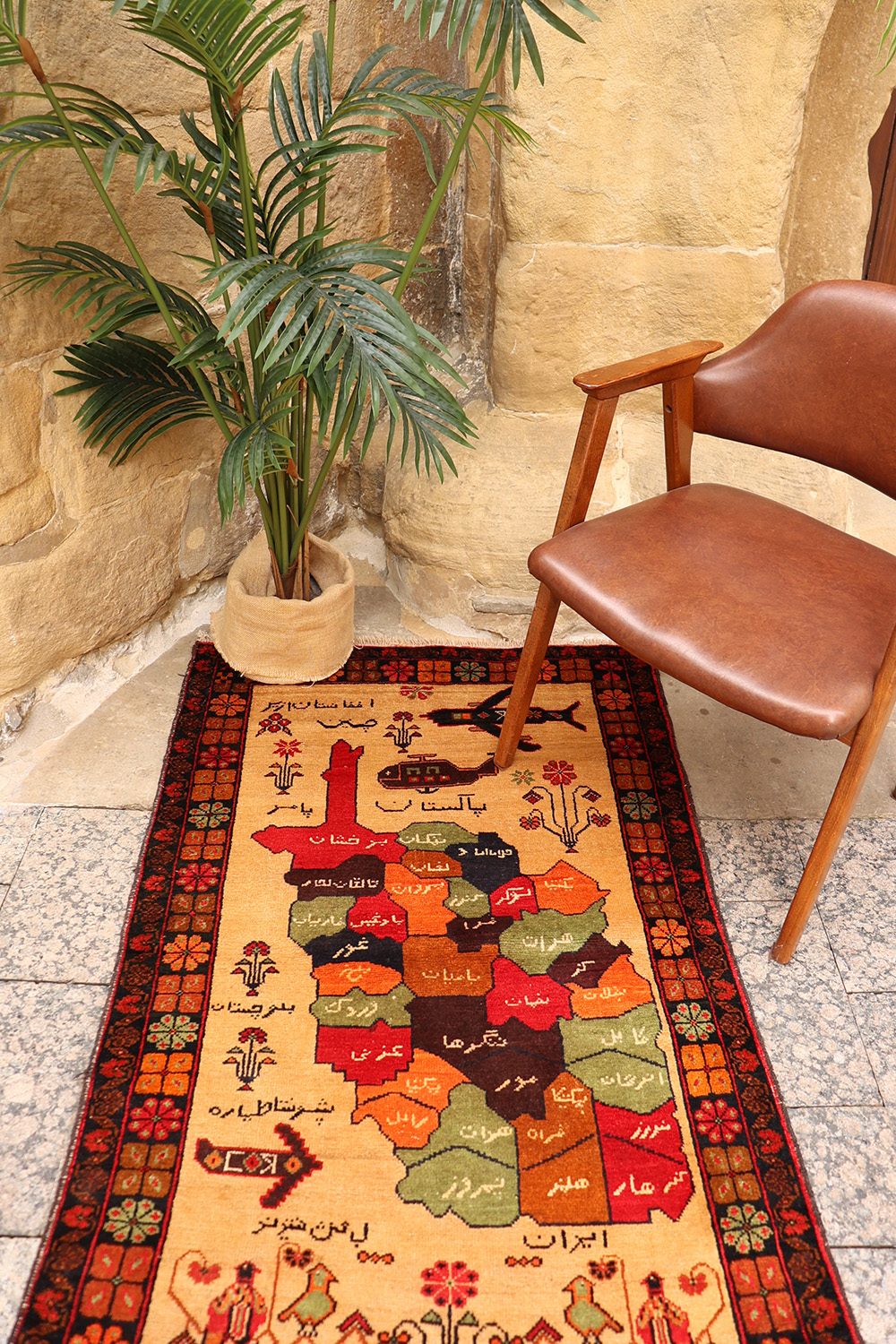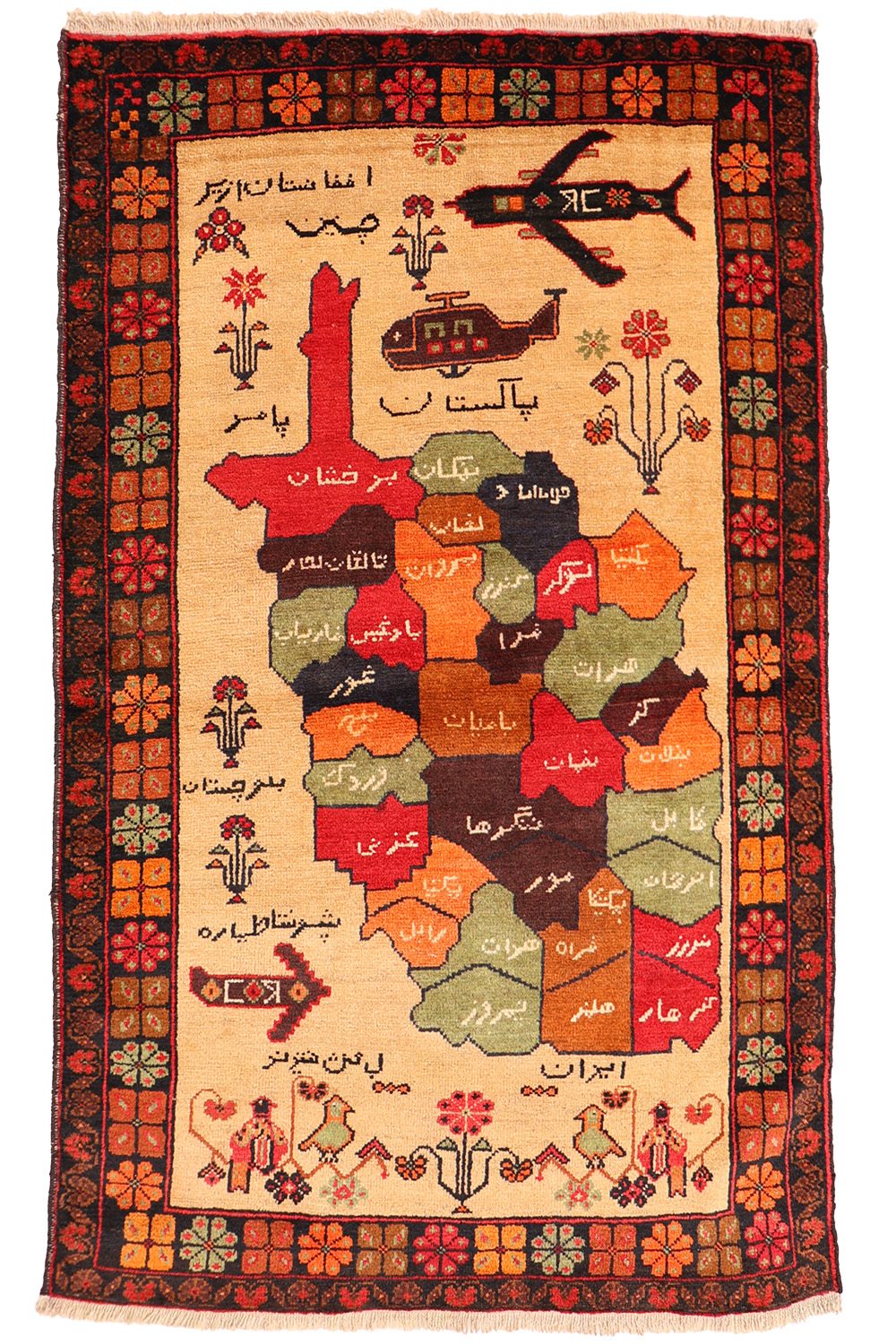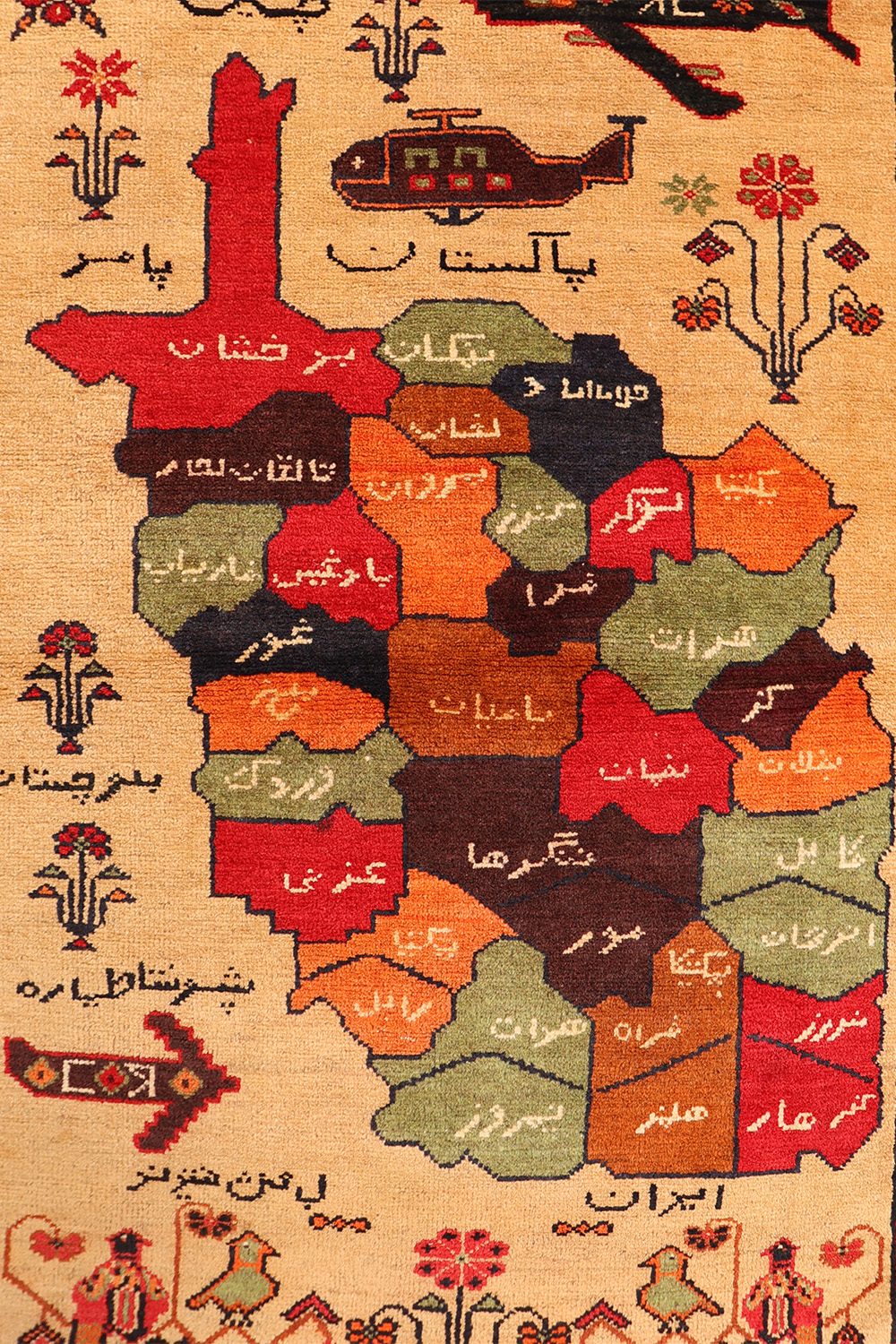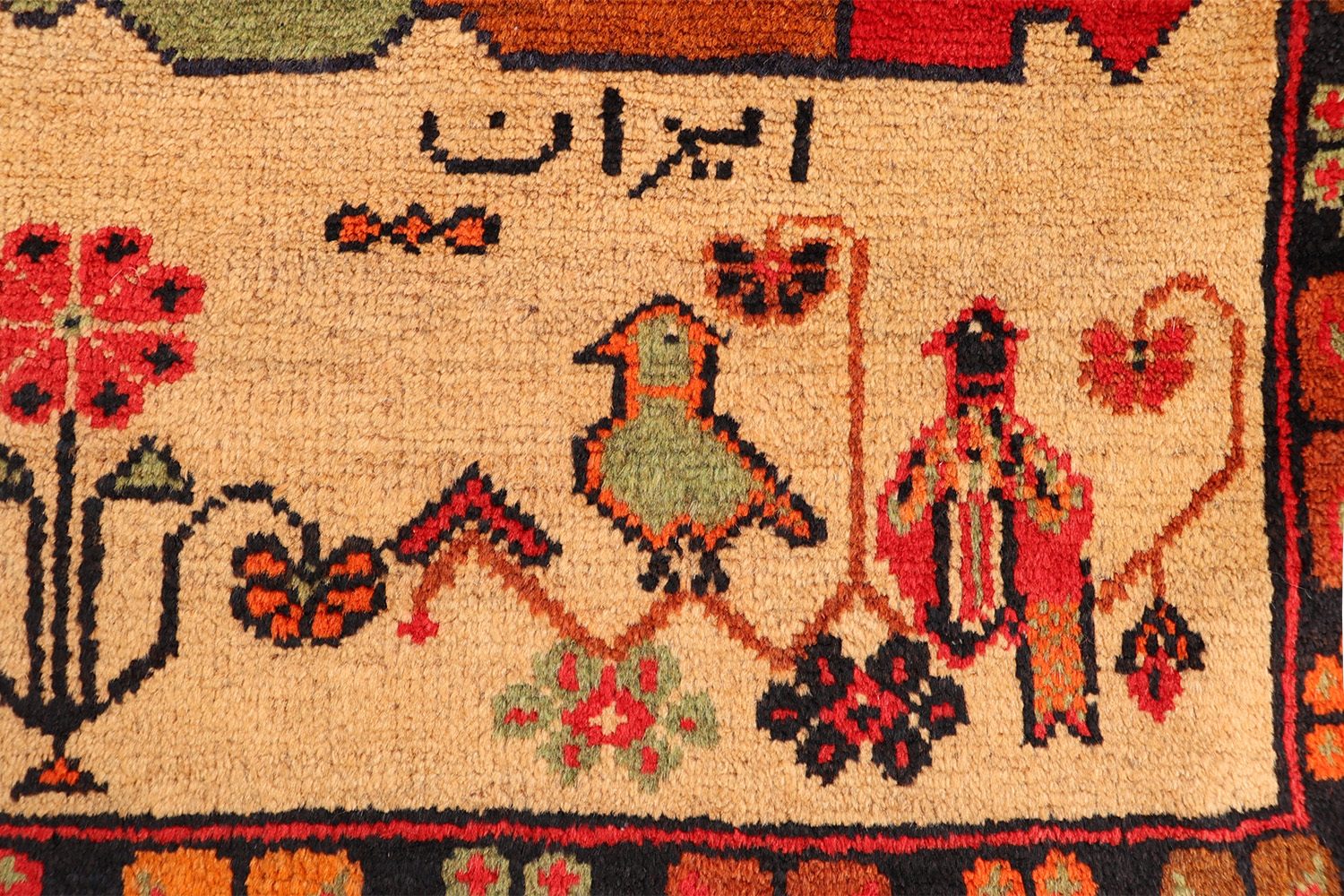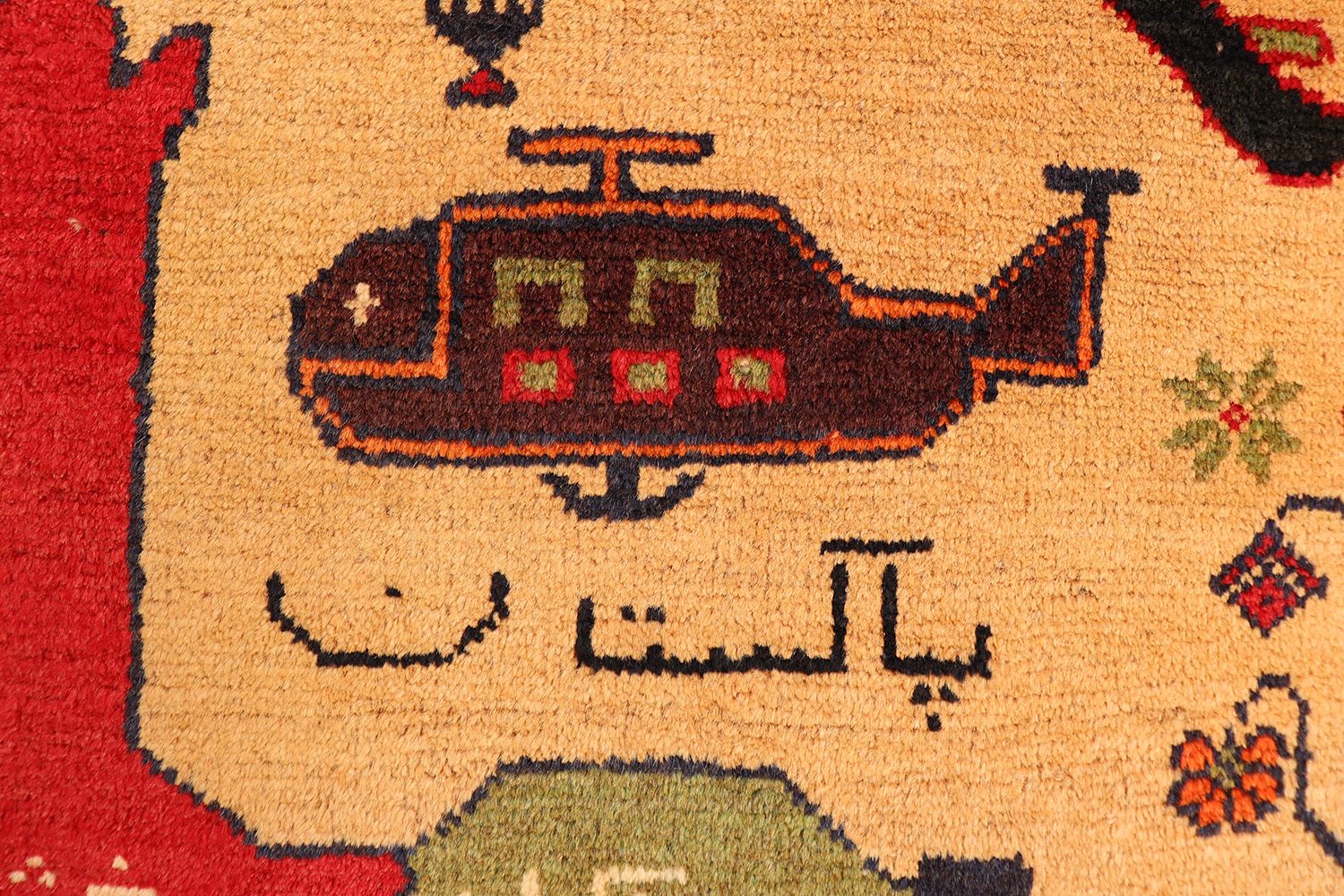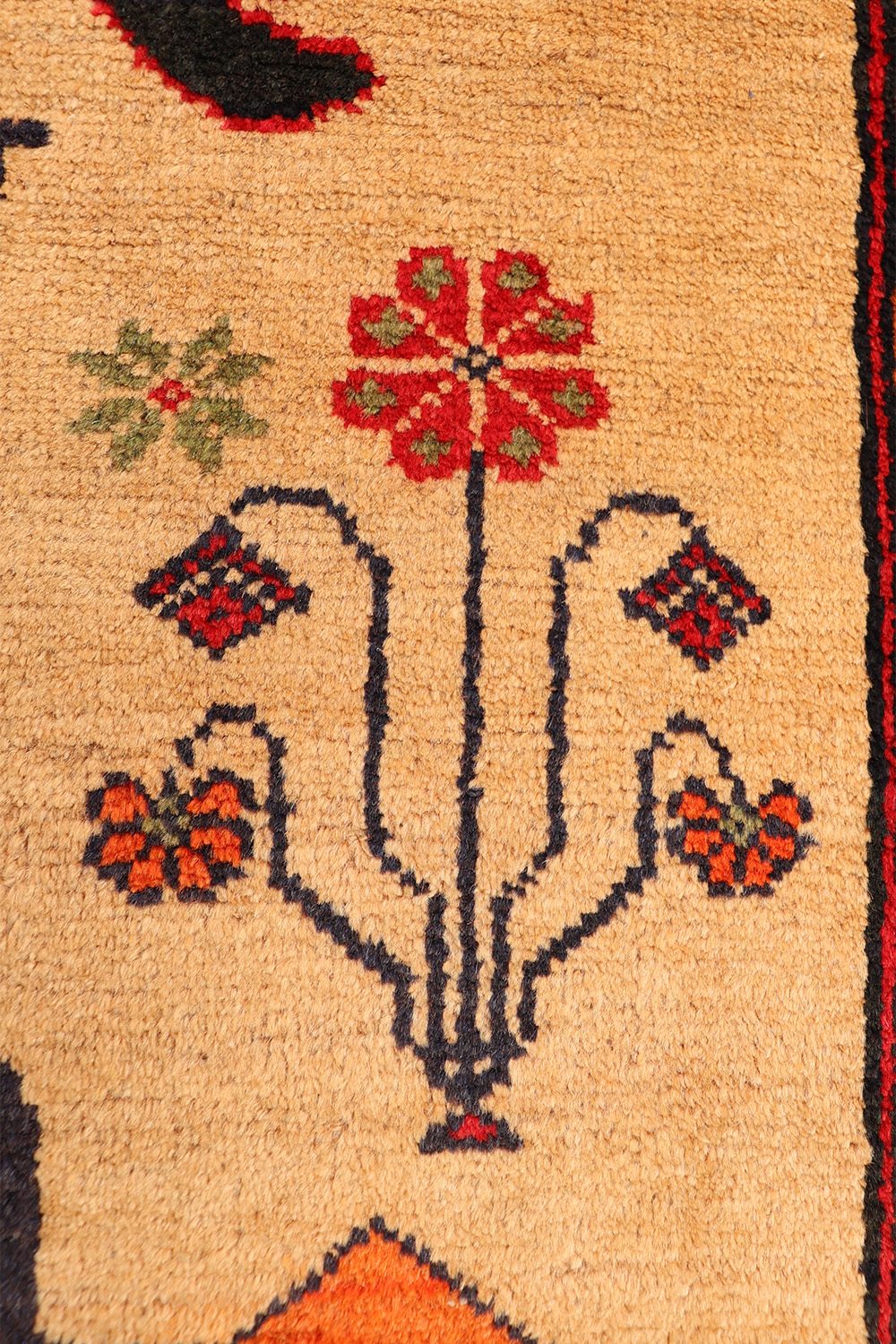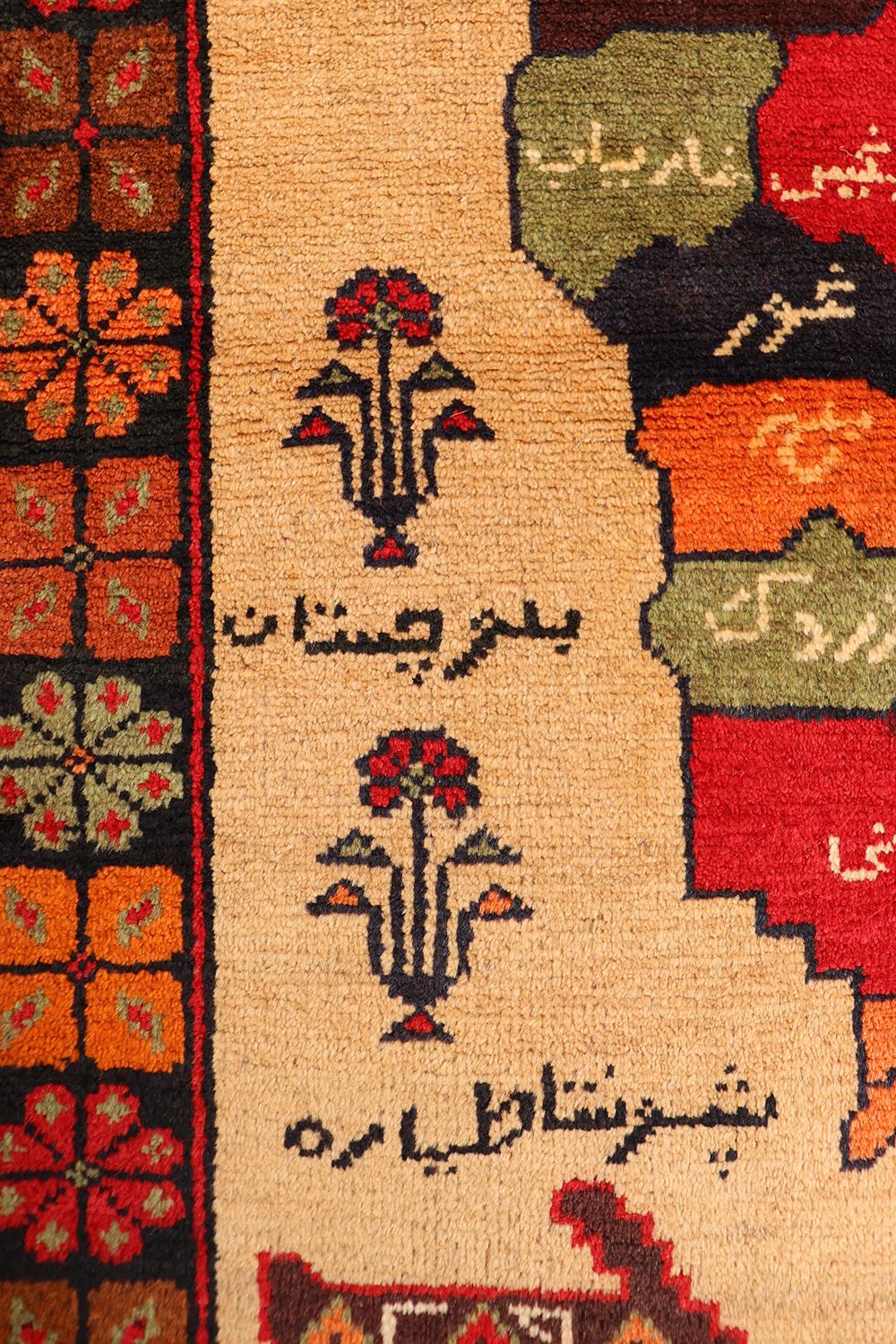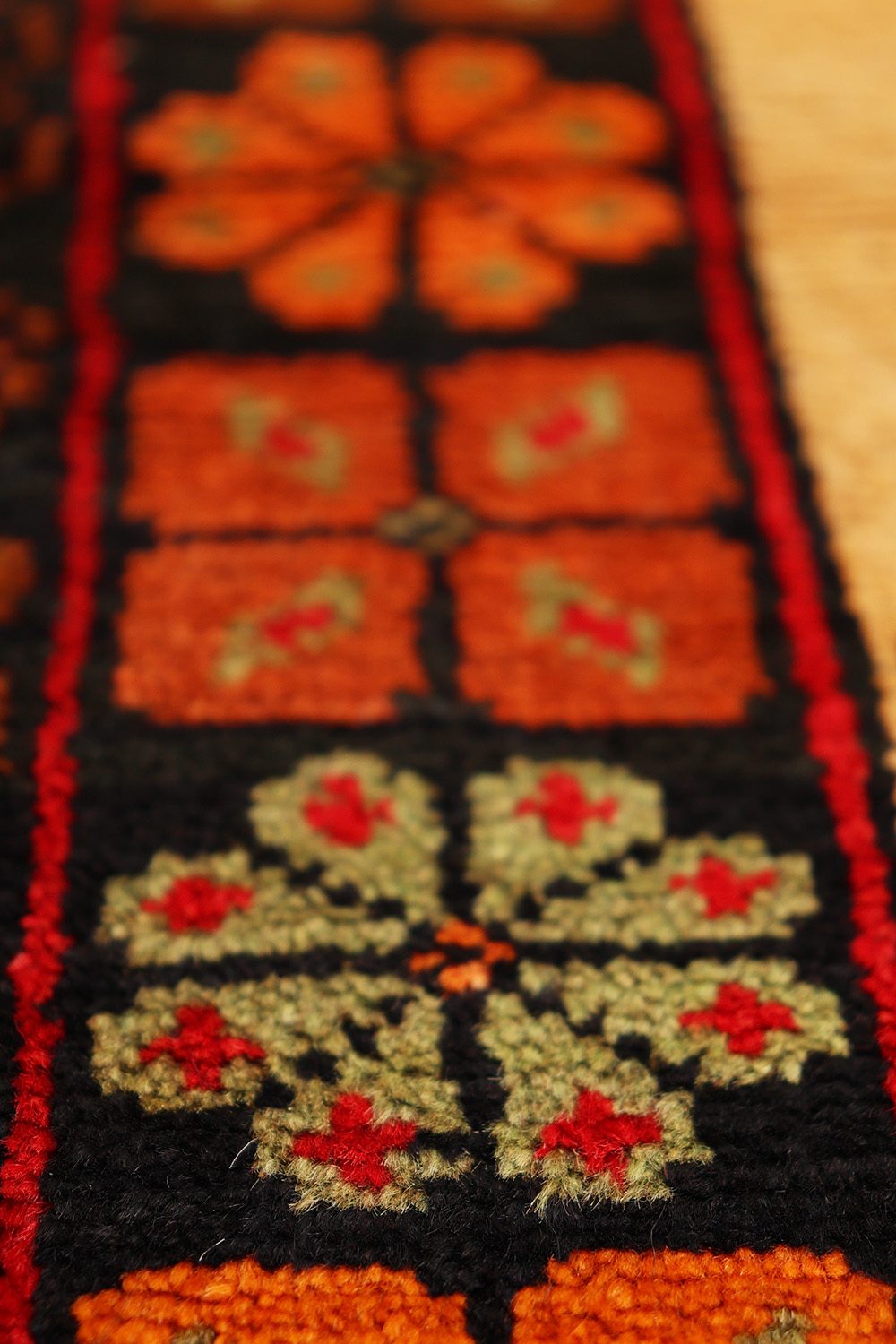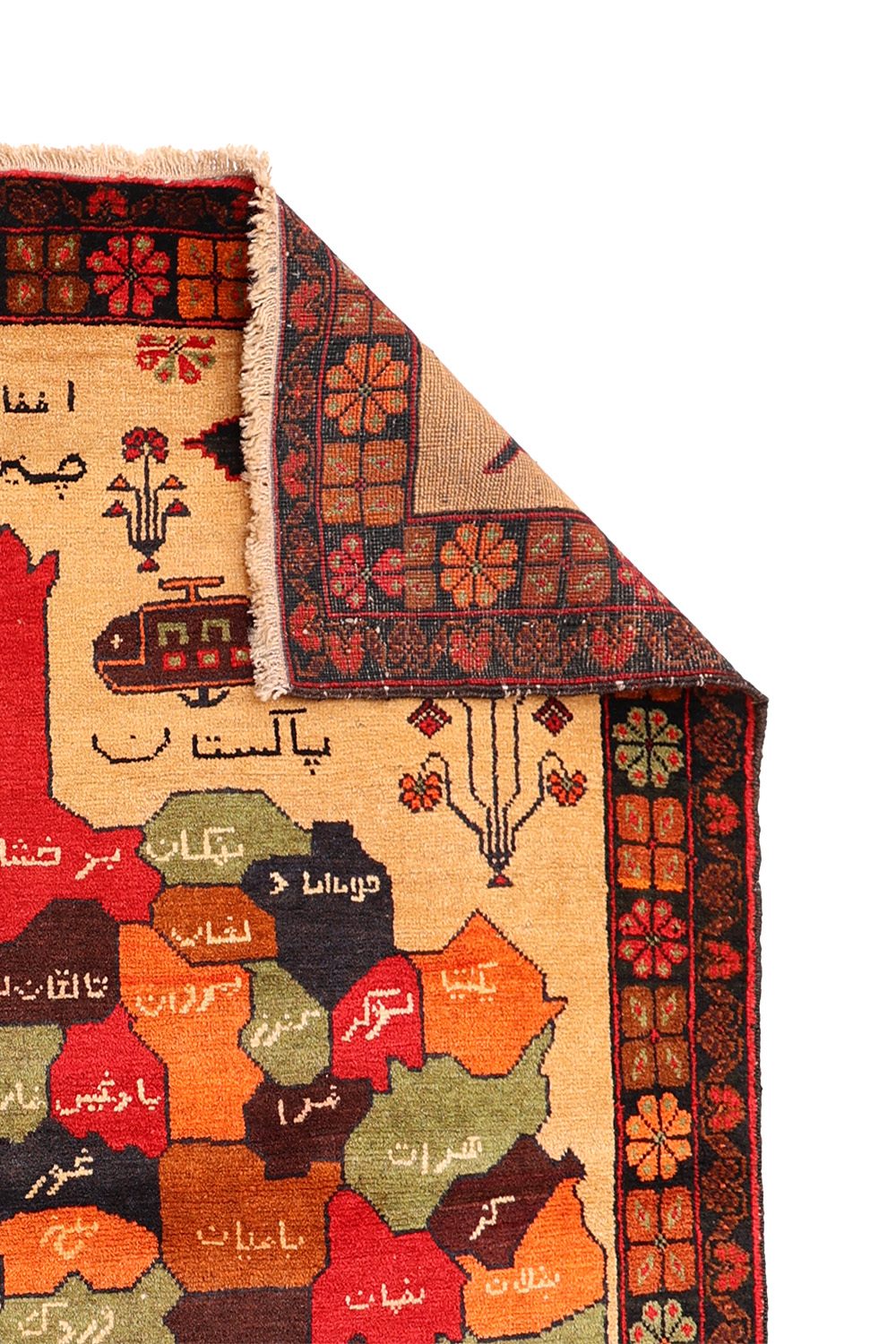560.00 €
Exceptional Baluch War Rug Featuring a Map of Afghanistan (c.1980s–1990s)
This remarkable vintage Baluch war rug from Afghanistan presents a fascinating design: a map of Afghanistan divided into provinces, woven in a mirror image — flipped from how we normally see it on a standard map.
The inscriptions across the rug offer extraordinary clues about its origins and story. In the upper right corner, we read “Afghanistan to China border”, while the left corner bears the word “Pamir”, referring to the Afghan corridor leading to China. Beneath the helicopter appears “Pakistan”, and along the middle left, we find “Baluchistan” and, just below, “Pashtonistan” alongside an airplane motif.
What truly sets this rug apart, however, is the inscription in the lower left corner: “Bafti Shiraz” — meaning “Made in Shiraz” — followed by the word “Iran.” This rare detail suggests that the rug may have been woven by an Afghan Baluch refugee living in Shiraz, Iran.
The theory gains strength from several design elements influenced by Southwest Persian (Qashqai) weaving traditions, such as the stylized flowers in the borders and the depiction of plants, birds, and blossoms in the lower field. The color palette, featuring vivid orange, green, and red tones, also aligns more closely with Qashqai rugs than typical Baluch pieces.
Adding even more intrigue, this rug was sourced in Afghanistan — raising questions about the weaver’s journey: was she born in Afghanistan, displaced to Shiraz, and later returned home where the rug was sold?
An extraordinary and enigmatic piece, rich with cultural crossover and history — a true collectible for connoisseurs of war rugs and nomadic art.
Material: 100% hand-spun sheep wool
Size: 143×88 cms
Origin: Baluch tribe from Afghanistan
Date of weaving: 1980s
The Baloch or Baluch are an Iranian people who live mainly in the Balochistan region, located at the southeasternmost edge of the Iranian plateau, encompassing the countries of Pakistan, Iran and Afghanistan. There are also Baloch diaspora communities in neighbouring regions, including in India, Turkmenistan and the Arabian Peninsula.
The war rug (Persian: فرش جنگی farš jangi) tradition of Afghanistan has its origins in the decade of Soviet occupation of Afghanistan from 1979 and has continued through the subsequent military, political and social conflicts. Afghan rug-makers began incorporating the apparatus of war into their designs almost immediately after the Soviet Union invaded their country. They continue to do so today in the wake of the United States’ 2001 invasion of Afghanistan which ousted the Taliban government of Mullah Omar but has failed to bring an end to violence in the country. The rugs produced in response to these events are among the world’s richest traditions of war art of the late 20th and early 21st centuries.
The terms Baluch and war rug are generalisations given to the genre by rug dealers, commercial galleries, collectors, critics, and commentators. The distinctive characteristic of these rugs is their capacity to convey their makers’ experiences and interpretations of the circumstances and politics of war and conflict in the region.
Since the withdrawal of the USSR, the same themes and subjects have been reused and remade. Additionally, after 9/11 the events of that day were recorded in carpets, and more recently – since 2015 – drones have appeared as subject matter.
Out of stock
Additional information
| Weight | 3.5 kg |
|---|
Subscribe and receive the lastest news
